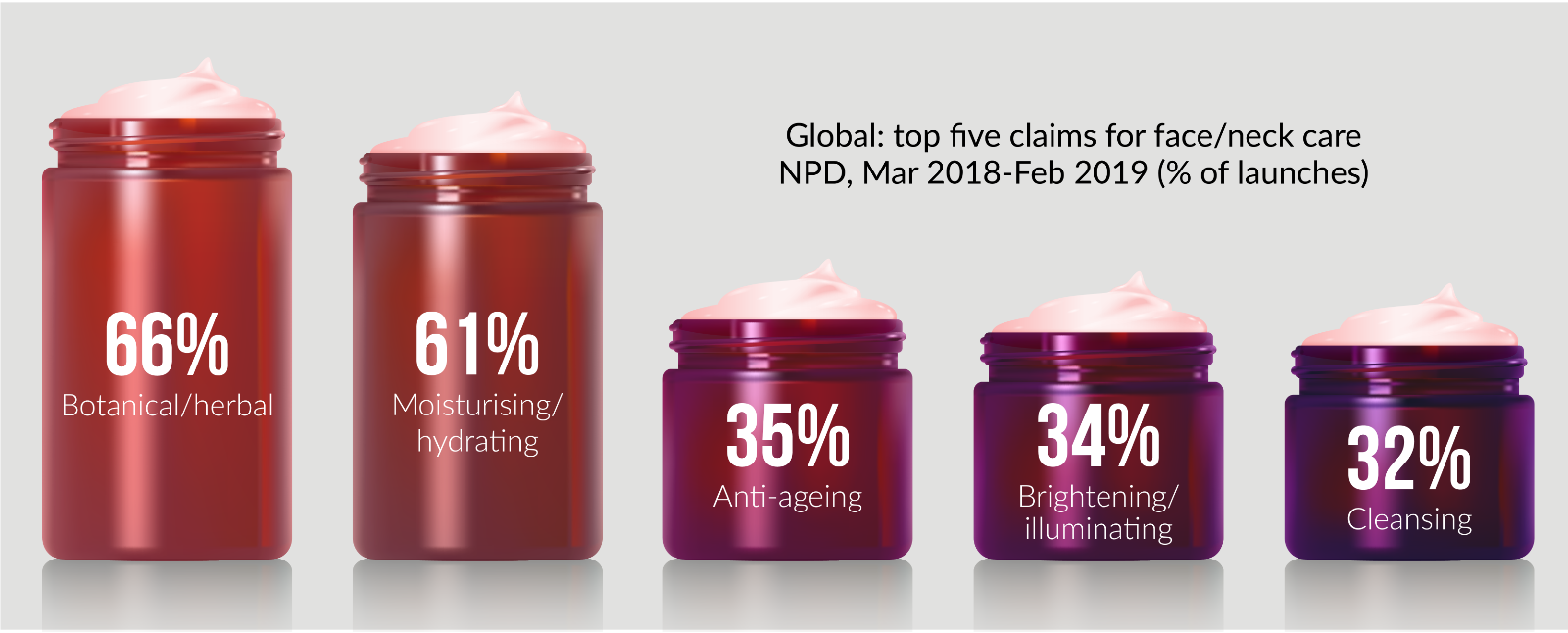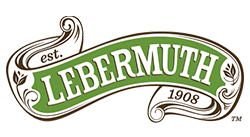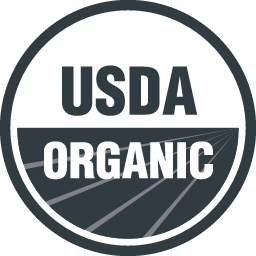THE LATEST IN FACIAL CARE
by Publication repost, on Aug 09, 2019
According to recent Mintel report, there are three key elements consumers desire the most from facial care products in 2019.
- Hydration
- Holistic Well-being
- Customizable Solution
Moisturizing is the number one sought out benefit for face care, mostly through all-natural ingredients.

Photo credit: Mintel GNPD
There are many levels of consumer demands that they desire to be addressed. Consumers want skin to have a healthy glow (20% of new product launching mention “glow” or “dewy”). At the same time, they also want to replenish dry skin, repair aged or scarred skin, manage oily skin, and various other skin conditions ranging in severity. Most importantly, buyers want products with ingredients they can trust that are natural and environmentally friendly.
INGREDIENTS TRENDING IN FACIAL CARE
There are a few new star ingredients appearing in recent product launches:
- Essential oils & water
- Tea-derived ingredients
- Botanical
Some on-trend botanical ingredients are green tea, white tea and lavender. Teas are commonly associated with vitamins and antioxidants that provide skin health benefits such as hydration, anti-aging, anti-inflammation, evening skin tone and blemish control. While Lavender oil is believed to provide purification and favorable amounts of vitamin E.

Other upcoming players are CBD, Mushroom and Superfoods and Fats that claim to provide deep hydration and softness through natural ingredients. There has also been a slight raise in microbiome support with pre/probiotics in skincare which is believed to provide balance to the skin resulting in young, healthy looking glow.
LONG-TERM FACIAL CARE INFLUENCERS
Mintel’s 2025 BPC Trends looks forward at future predictability in facial care products. They identified 3 key categories:
- Water: the new luxury
- Climate & hormonal influences
- Beauty with a Brain
Water, the new luxury
The focus on water consumption, and the fear of running out, has begun to turn this resource into a precious commodity. Consumers are pushing more and more for brands to address sustainability and develop environmentally friendly products causing brands to re-look at how they formulate and manufacture.
Beauty brands have begun to explore limiting their dependency on water to develop products. Formulations explore water alternatives such as water extracted from fruit, clouds and asteroids, and assessed the possibility of using recycled water, or no water at all. While some brands are developing water-holding technologies, while others emphasize the provenance or uniqueness of the water used in their products. In parallel, the development of the waterless trend provides new opportunities for innovation within the moisturizing segment.
Hormonal and Climate Influences
While vitamins, minerals and anti-oxidants play a key role in hydration and holistic well being for the skin, there are other factors to consider.
Brands have several generations of consumers to solve for. Whether a younger generation, or an older, all women experience hormonal changes. This provides the opportunity to target innovation around hormonal changes in several key demographics such as pre/during/post period & menopause care.
Consumers are also becoming aware that not all skin condition factors are internal, many are influences are external as well. Factors like climate and weather can lead to variations in moisture levels, providing options to target products based on temperatures, humidity, seasons and climates.
Beauty with a Brain
The link between appearance and sleep, mental health and other lifestyle factors has grown as a concern for overall well-being.
Natural beauty products can be developed to not only provide hydration but also promote emotional, mood and/or sleep aid. The Aromatherapy market has exploded over the last several years, educating consumers on mood-enhancing benefits from essential oil aroma. This opens the doors to include adaptogen ingredients in beauty care to promote well-being.
Source: Mintel GNDP / Mintel.com




